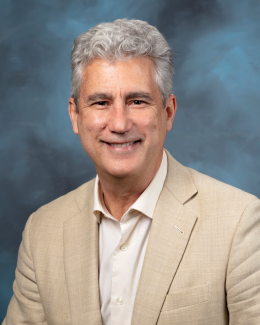To help the aviation sector reach a goal of zero carbon emissions by 2050, DOE’s Center for Bioenergy Innovation at ORNL is setting its expertise and capabilities in plant science, genomics, microbiology and chemistry to the task of creating new low-carbon fuels for airplanes.
Aviation is difficult to decarbonize. The weight and low energy density of today’s batteries rule out electrification of large jets. The sector is looking instead to biologically sourced fuels to ultimately replace conventional petroleum-based products.
The need is urgent. The U.S. government has set a near-term goal of cutting life-cycle aviation greenhouse gas emissions in half by the year 2030, including emissions from fuel production and transport. To meet that goal, an estimated 3 billion gallons per year of a biomass- or waste-derived product known as sustainable aviation fuel, or SAF, is needed. By 2050, a full 35 billion gallons a year will be required to have all domestic flights running on SAF.
But the SAF industry is still in its infancy. According to the International Air Transport Association, only about 79 million gallons of SAF were produced worldwide in 2022, most from waste fryer oil. It is unlikely that the world will increase its consumption of fried foods enough to meet the grand challenge of SAF from waste resources.
Enter CBI, one of four DOE Bioenergy Research Centers across the nation with a mission of supporting a viable biofuels and bioproducts industry. The CBI brings together scientists from 17 national labs, universities and other partners to develop better biomass feedstock plants, along with custom-engineered microbes and catalysts to break down and convert the natural polymer lignin from nonfood crops like poplar and switchgrass into fuels.
“We’ve assembled as part the CBI team the world’s best experts in many areas, including soil carbon sequestration, plant wall biosynthesis, microbial conversion of cell walls into fermentative intermediates, and catalytic chemistry for the conversion of these renewable feedstocks into hydrocarbons that can be used as a means of displacing current aviation fuel,” said CBI Chief Executive Officer Jerry Tuskan.
In early 2023, CBI was renewed for five more years of funding by DOE’s Office of Science. The center’s mission for the next five years is to focus on developing plant-derived SAF and certifying such blendstocks into an industry standard that verifies it has the same basic properties as conventional jet fuel.
The certification process is comparable to a pharmaceutical certification in that it’s not just the end-product that’s tested, but the steps taken to get to the final product, Tuskan explained.
CBI is working on initial fuel characterization using ORNL mass spectrometry and analytical capabilities for 18 fuel blendstock candidates derived collectively from poplar, switchgrass and corn stover feedstocks. Follow-on testing will be performed at the Federal Aviation Administration’s fuel certification facilities at Washington State University.
Early results indicate a poplar-based CBI fuel will exceed many required parameters, one of which is reduced soot emissions. The soot emitted by jets that use fossil fuels acts as a condensation trigger that creates plane contrails — the white trails that appear behind aircraft. Those human-made clouds have been implicated in warming the Earth’s climate by trapping heat that would otherwise be released into space.
“Using plants to produce fuels and bioproducts has multiple benefits in addition to being cleaner burning,” Tuskan said. “During photosynthesis, as biomass forms, plants draw carbon dioxide out of the atmosphere. When we convert that biomass into fuels, carbon stored in the plant roots remains stored belowground. This means biofuel production contributes to carbon sequestration as well as fossil fuel displacement.”
Displacing fossil fuels with bio-based alternatives has other benefits, Tuskan said. “If we can meet the U.S. goals for displacing fossil fuels and reducing atmospheric carbon dioxide, we will not only create green jobs here at home, but we will also benefit people around the world who live in at-risk communities like low-elevation environments in coastal regions or in urban heat islands.”



